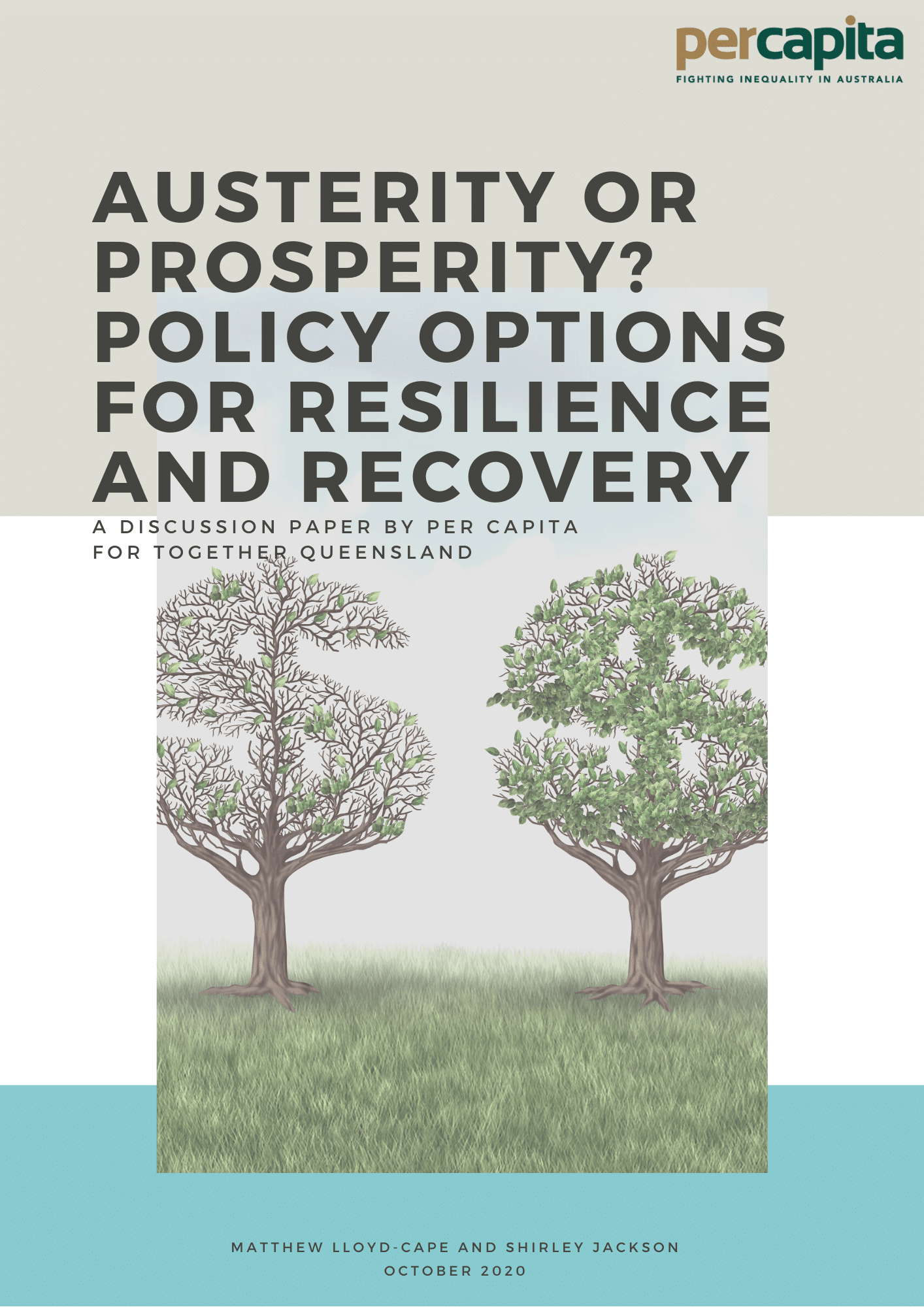Executive Summary
The federal budget showed that the Coalition is committed to a private sector recovery with barely any additional government support to the unemployed, the public sector or older women – the hardest hit portion of the workforce. In Queensland, the LNP have claimed that they would balance the budget within four years without any increase in taxes, meaning that their plan is effectively to engage in austerity policies, while the state is in the deepest recession for 100 years.
The consequences of the LNP plan to balance the budget within four years would be disastrous.
We estimate that effect of balancing the budget would increase unemployment in Queensland by 2.47 per cent to a rate of 9.97, a rate not seen in thirty years, and reduce gross state product (GSP) by 1.72 per cent over two years, deepening the recession and causing unnecessary misery for Queenslanders.
The total number of public sector workers that would need to be shed to achieve a neutral budget would be 29,500 FTE job in the first year of cuts, and a further 13,000 the next. As a consequence of the enormous decline in demand for goods and services that the cuts would create, private sector jobs of would fall by around 16,000 in the first year of cuts, and 7,000 in the second year.
In this discussion paper for Together Queensland, we look at some mechanisms for improving the equity and efficiency of stimulus spending. For example, state and federal governments should put “gender on the tender” for public construction contracts to increase gender equity and productivity. Easy entry retraining schemes, for roles such as teaching assistants and allied health professionals, could provide workers with quick access to socially beneficial employment. And fixing the aged care sector would generate immediate jobs as well as solving one of the great blights on our social infrastructure.
The current crisis is an opportunity to reduce inequalities and inefficiencies in the economy, and to prepare us for the next phase of economic development. This will rely on us shedding some misconceptions: that state employment is of less value than private sector work, that “the economy” is what businesses do, that roads and power stations are more economically productive than education and social care.

